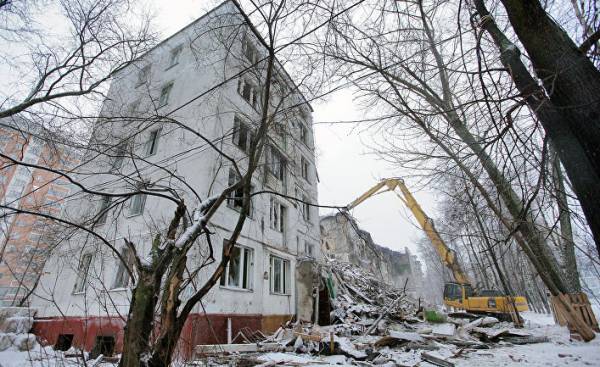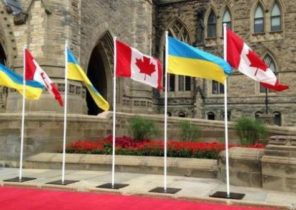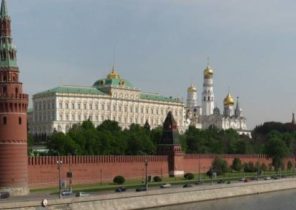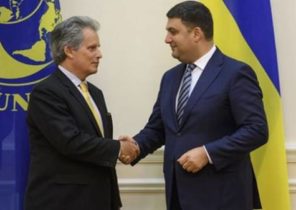
The crisis in the Moscow market of real estate should come to an end thanks to the “clap of thunder”. It is believed that this “thunder” will put an end to a two-year recession in the construction sector will create several thousand new apartments. At the same time it must ensure that the mayor of Moscow Sergey Sobyanin continued stay in office. Many believe it is one of the important reasons why the mayor, who in 2018, facing re-election, in early March, has taken this initiative before President Vladimir Putin: the mayor wants, if possible, to quickly carry about 8 thousand of the old houses and build instead a modern. Experts fear that the total cost for this project will exceed $ 50 billion.
We are talking about the demolition of houses, which largely determine the shape not only of Moscow, he and almost all the cities of the former Soviet Union — the so-called Khrushchev. They are named in honor of Nikita Khrushchev, who, being in the 1950s and early 1960s, years head of the Communist party and the government, initiated a large building program with the goal of eliminating a huge shortage of residential space. A typical “Khrushchev” is a five-story building of concrete blocks (the higher house would be equipped with elevators), which could be built quickly and cheaply. A later series of “Khrushchev” built of brick and equipped with elevators.
It was originally planned that these houses will stand for only a few decades, but throughout the country there are still a great many “Khrushchev”. According to many Russians, they are the best of all “heritage”, which left people, who came to power after Stalin. Most of them are in poor condition and do not correspond to modern construction standards.
However, the “modernisation programme” from Sobyanin has caused among Muscovites of great concern: many of them live in these houses their entire lives — since the Soviet times. Thus, they may soon lose their homes, but to get a new apartment.
Beautiful parks, pedestrian zones and Cycling paths
The success of such an ambitious project in such a short time would cause doubt even in a well-functioning legal state, and in Russia, no one can know exactly what shenanigans will “crank” in its framework. In addition, the intention Sobyanin has not yet formulated specific plans, and the Moscow authorities and, in particular, the construction sector are known for their corruption. We only know that the demolition of the buildings will affect the 1.6 million residents of the capital, the total population of which is about 14 million people.
However, there is no doubt that the mayor, at least, begin to implement your plan. He is known for his large-scale promotions, when suddenly demolished hundreds of stalls because of the alleged absence of the relevant licenses, or when suddenly a mass laying tiles on the sidewalks. However, the activity of Sobyanin as mayor, which he has held since 2010, went to the city for the benefit of: the beautiful parks, pedestrian zones and Cycling paths have given Moscow a much more attractive appearance. Critics believe that the mayor for re-election don’t even need a program for the demolition of “Khrushchev” and the construction of new housing.
If anyone is the demolition of “Khrushchev” and need is the construction and developerskimi sectors. Falling oil prices has caused in Russia in 2015 and 2016 the economic crisis, putting an end to years of boom housing market of the capital. The company reduced investment, and real incomes fell by more than 10%. The construction sector in the past two years decreased across the country by 4-5% per year. Since the market has continued to enroll new residential and office space, construction of which began hedgehog before the crisis, property prices declined further.
Russians tend to take a moment
Anyway, there are already some signs of recovery: last year the Moscow market of real estate again came investment of $ 4.2 billion. For comparison, in 2015 this figure was, according to real estate Agency JLL, only 2.4 billion dollars — even less than after the global financial crisis in 2009. Almost half of these funds were invested in the construction of office space, since the Russian company seized the moment, when prices reached multi-year low, and invested in new office complexes in the capital. In the most popular office centers have significantly reduced the number of empty premises.
The housing market is also recovering — though only within city limits. Adjacent to the Moscow territory, actively zastraivaya in the boom years, yet are still in decline. This is not surprising, because, according to the newspaper “Kommersant”, in the capital the apartment is possible to buy almost for the same money, and outside the Moscow ring road: approximately 2.8 million rubles (about 50 thousand dollars). For comparison: in February 2014 the cheapest apartments in Moscow cost 4.1 million rubles.
It is clear that many Russians want to take a moment and acquire, if possible, a comfortable property close to the centre. In 2015, significantly increased the volume of issued loans and borrowings — due to the relatively attractive rates. However, to the level of Eastern Europe is still far away.
About half of Russians live in homes built before 1980. According to the world Bank, every Russian living in average on an area of 10 square meters and apartments in new houses on the outskirts of the capital, although and much better than the “Khrushchev”, the area slightly exceed them.
This is not the case with real estate of a class “Lux”, very popular in Moscow in the pre-crisis years. However, her prices are in rubles in 2016 has declined by about a quarter. For foreign investors that make them even more attractive — because with oil prices much cheaper and the ruble. According to real estate Agency Knight Frank, one square meter in the house “luxury” costs about 13 thousand dollars. In 2012, the price was a record 25 thousand.
However, the interest of foreign buyers is still quite restrained. After all, they can’t be sure that Sobyanin is giving out contracts for construction areas that will become vacant after demolition of “Khrushchev” will give preference to foreign companies, the managers of which will arrive to Moscow, will require housing and additional “disperse” the luxury segment of the Moscow market of real estate.







